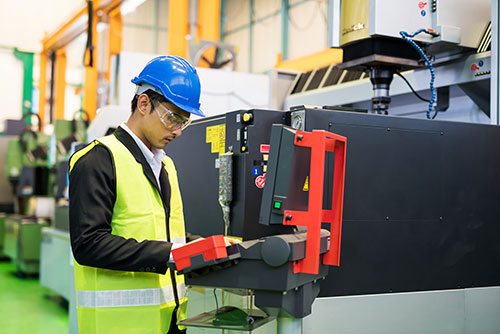Many manufacturers face competition from abroad. In response, they’ve moved to value-added production as a means for improving their competitiveness.
Manufacturing continues its evolution away from labor-intensive processes toward knowledge-based skills. These require technological problem solving. But, the way an organization regards its workforce must evolve as well.
Companies must recognize that manufacturing employees need new combinations of skills. Cost reduction initiatives adopted by large manufacturers and have been forced down the supply chain. In turn, small companies must move past the position of low-value, low-wage supplier.
History of Worker Productivity
Before the Industrial Revolution over 200 years ago, gains in human productivity were slow and immeasurable. Then productivity began growing exponentially with the use of moving water and then steam. Then, internal combustion engines began to drive devices used for manufacturing.
These advances increased the output of each individual worker and the companies they worked for. Advances in industrial technology continued nearly unabated in the decades that followed.
Then, in the 1950’s and 60’s, the computer revolution further increased productivity. In the 70’s and 80’s the Internet came into fashion and another explosion of productivity began.
Today see see technology like mobile applications, the cloud, and other connectivity solutions. These provide opportunity for enterprises to drive workforce productivity higher to combat low wage competitors.
How to Improve Worker Productivity
The best way to drive employee productivity growth is to increase investment in workers. This could happen through education and training, technology, and capital equipment.
But to do this, organizations must do more than hope for productivity improvement. Any justified technology purchase should be part of a strategic productivity improvement plan. The plan helps create a “culture” of productivity within an organization.
Here are some considerations when developing a plan:
-
A culture of productivity begins from the top down with management
-
Evaluate existing process automation, technology and applications to identify constraints and productivity obstacles
-
Avoid continuing to do things because “that’s the way we have always done them”
-
Document repeatable work flows, work instructions and ensure strict adherence to them
-
Weave related workflows together whenever possible to consolidate worker tasks
-
Generate worker tasks through software automation
-
Create or re-energize a strategic core workforce training and cross-training program
-
Encourage manufacturing employees to help identify process innovations
Faster growth in labor productivity allows a workforce to produce more and to earn increased wages. This helps with employee attraction and retention.
Building a plan around productivity delivers benefits to firms that need to make every dollar of investment count. It’s an ongoing effort that requires hard work, vigilance and continuous improvement. But it’s a key component to the longer term health of a manufacturer and its workforce.

